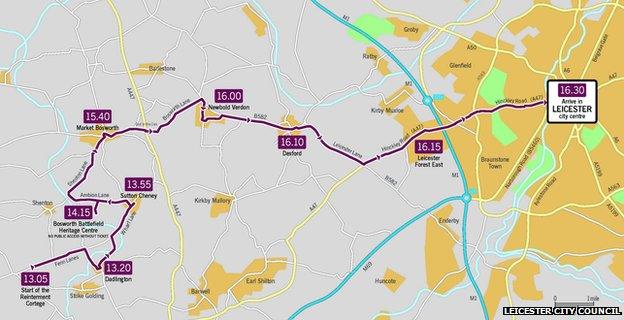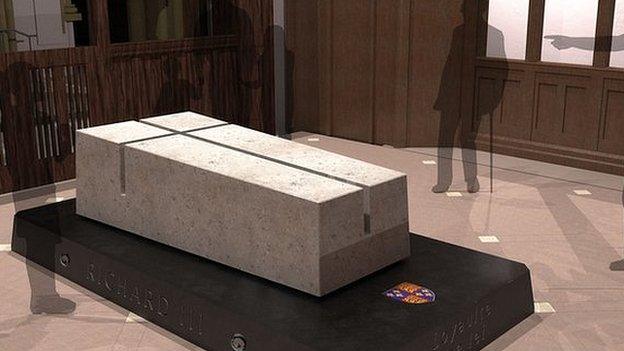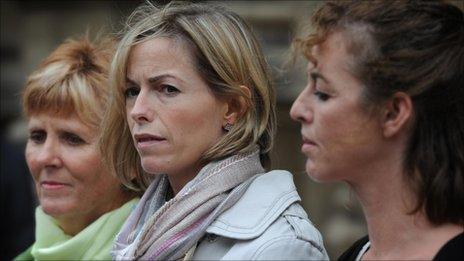Roses on Richard III cortege route will highlight missing people
- Published

The hand-made roses will be displayed at the academy in Desford which the cortege will pass on 22 March
More than 5,000 white hand-made roses will be placed along the route of Richard III's cortege, external in Leicestershire to raise awareness of missing people.
On 22 March, the last Plantagenet king's coffin will visit locations associated with his final days, ahead of the reinterment at Leicester Cathedral four days later.
Bosworth Academy organised the display with the Missing People charity.
Residents are being encouraged to add their own white roses along the route.
The organisers want to display 5,929 white roses, made from a variety of materials including ceramic, plastic and paper, to represent the number of people who went missing in Leicestershire in 2012-13.
Richard III, who was killed in battle at Bosworth in 1485, reigned for only 26 months. He was the head of the House of York, which had the white rose as its symbol.
His remains were buried at Greyfriars church in Leicester but the grave was later lost and covered by a car park.
Tim Empson, project leader at Bosworth Academy, said: "The purpose of the installation is to raise a real contemporary issue of people who are missing today - and the response has been heart-warming."
A series of workshops are being held at the academy to make roses for the installation.

Stops along Richard III's last journey - Sunday 22 March

University of Leicester - the hearse will leave there at midday
Fenn Lane Farm - reputedly the site of the King's death at the Battle of Bosworth
Dadlington - burial location of the battle-dead in the churchyard of St James' the Greater
Sutton Cheney - where the king took his final Mass at St James' church
Bosworth Battlefield Heritage Centre - for a short ceremony
Market Bosworth, Newbold Verdon and Desford - locations connected to the king's campaign
Bow Bridge in Leicester and finally Leicester Cathedral
- Published17 September 2014

- Published7 September 2014

- Published13 June 2011
